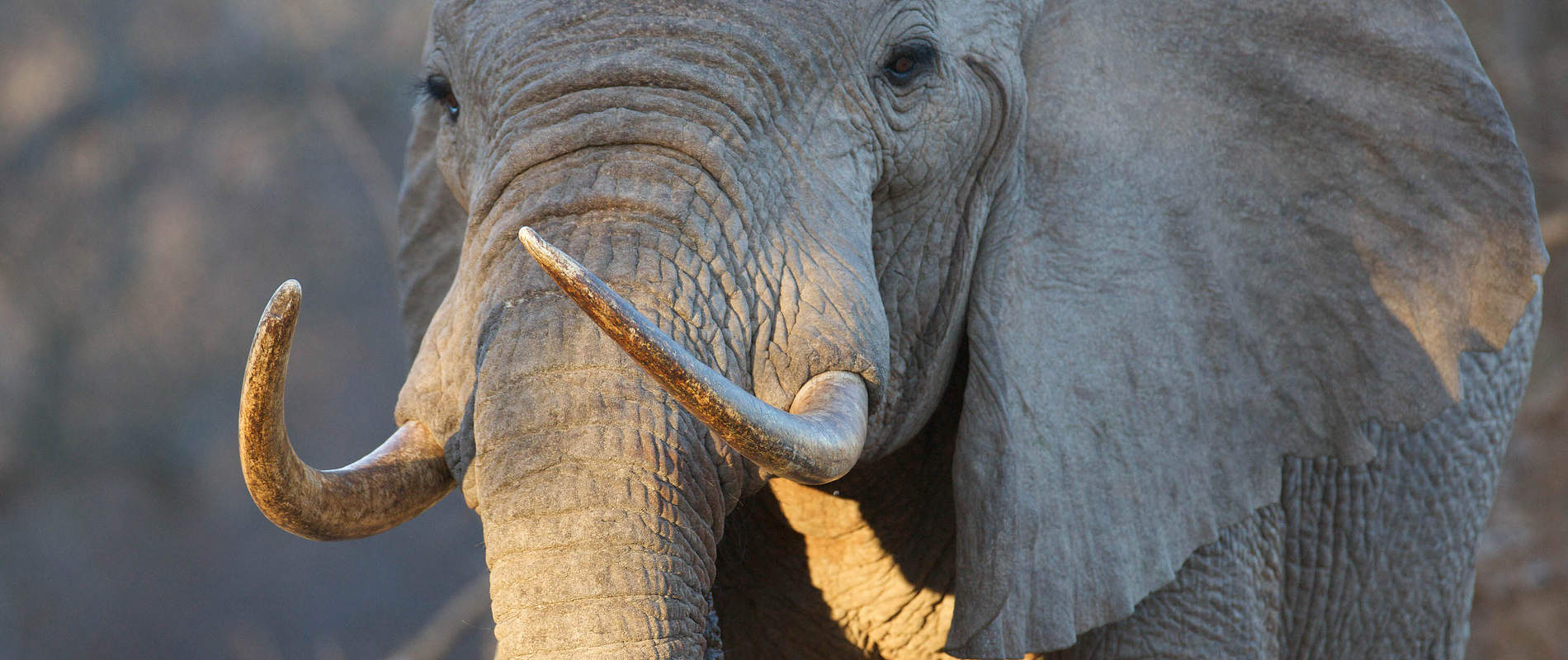Catastrophic poaching levels followed the last CITES-agreed ‘one off’ sales of ivory stockpiles, threatening elephants with extinction. Now, to raise funds, Zimbabwe has said it wants to do it all over again.
In June 2019 Zimbabwe President Emmerson Mnangagwa opened a UN wildlife summit with a call to lift the global ban on ivory sales so it can sell its ivory stockpile. This declaration was not wholly unexpected and comes off the back of similar calls from Botswana, Namibia and Zambia. It should, however, send chills down the spines of any person that cares for elephants and is, in our opinion, bad news for elephants for a number of reasons.
Another ‘one off sale’ threatens to send the species into extinction
In 1999 and 2008 respectively, CITES (the Convention on International Trade in Endangered Species, which controls the legal trade in wildlife) decided to relax its global ban on the commercial ivory trade and allow two ‘one off’ sales of ivory from Southern African countries to China and Japan. At the time, the Sheldrick Wildlife Trust spoke out strongly arguing that these sales would “sign the death warrant for hundreds, perhaps thousands, of wild elephants in Africa”. In the ensuing years, our worst fears were not only proven correct but surpassed: from 2006-2015, around 111,000 African elephants were killed to satisfy increasing demand in ivory.
Many tusks ended up in China where ivory carvings have long been coveted, domestic sales of ivory were allowed and a burgeoning middle class were keen to acquire status symbols. As demand for ivory skyrocketed, poachers and trafficking syndicates took advantage of lax penalties, vast unsecured wilderness areas and corruption to kill elephants and traffic their tusks out of Africa to be sold on the black market. Researchers have since identified that “the legal sale of ivory triggered an increase in black market ivory production by increasing consumer demand and/or reducing the cost of supplying black market ivory”.
Today, poaching rates are much lower than they were in 2008-2013. This is largely due to a drop in demand from China following extensive demand reduction programmes, media campaigns seeking to educate consumers as to the truth behind the ivory trade and a domestic ban on trade in ivory (with some exceptions). Better detection training and equipment at borders, stringent penalties for those participating in poaching and wildlife trafficking and more boots on the ground, and planes in the sky to deter poachers, have also played an important role. However countries continue to underfund conservation efforts and implement woefully inadequate penalties against poaching and trafficking. Zimbabwe is one of them. A survey in 2014 found the country faced a major collapse in its elephant numbers in the north of the country due to rampant poaching, up to 75% in population numbers in some areas.
Should demand for ivory increase again, for instance in Japan which is now home to the world's largest legal ivory market and Vietnam with its burgeoning middle class and long track-record in illegal wildlife consumption, its likely many African countries including Zimbabwe will be unable to protect their elephants from poaching.
There is no guarantee ivory sales will benefit conservation
Back in 1999 and 2007, proponents of the ‘one off’ sales of ivory argued that they could better protect their elephants by raising funds for their conservation through the sale of their body parts. It’s likely this argument might be presented to the CITES committee again. Yet Zimbabwe’s record on conservation is catastrophic and with a score of 160 out of 180 on Transparency International’s Corruption Perceptions Index, there is scant evidence that funds from the sale of ivory will benefit its elephants.
In fact, Zimbabwe has pursued an unethical policy of selling its natural resources for profit for several years. It continues to capture young wild elephants to be sold to captive settings, despite vocal condemnation from conservationists, including the SWT, who expressed their concerns for elephants ripped away from their mothers and herds, causing untold emotional and psychological damage. Between 2002 and 2018, Zimbabwe raised $2.7million by exporting 93 baby elephants to China and the United Arab Emirates. It remains to be seen how this income has benefited elephants in any way.
It is short-sighted to risk the future of a beleaguered species so Zimbabwe can fill state coffers
We know a total ban on the international commercial trade in ivory works. After rampant poaching in the 1970s and 1980s led to plummeting elephant populations, CITES banned the international commercial trade in ivory in 1989, following years of campaigning by conservationists to close down the trade. The ban was effective; demand for ivory products dropped, ivory carving factories closed down, poaching levels were low and elephant populations were stable. All until the catastrophic ‘one off’ sales which unleashed a tsunami of elephant slaughter.
Today, several countries have got a handle on poaching. For instance, conservationists in Mozambique , which was particularly hard hit, have just announced that not a single case of elephant poaching has been recorded for a whole year. In Eastern Africa, where we work, poaching has dropped for a fifth year in a row to pre-2008 levels. This is critically important since the largest of the ‘one off sales’ occurred in 2008, which was when the worst of the poaching began.
Despite these strides, the species cannot survive another onslaught of poaching. Less than 415,000 African elephants are estimated to remain in the wild, compared with 3-5 million in the early 20th century. To risk this besieged population so Zimbabwe can sell its stockpile is not only unethical but a short sighted attempt to fill state coffers at the expense of a species critical to ecosystems and biodiversity that is faced with genuine threat of extinction.
